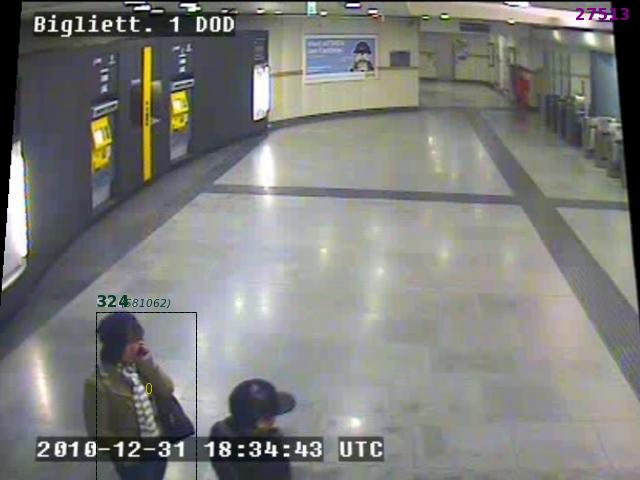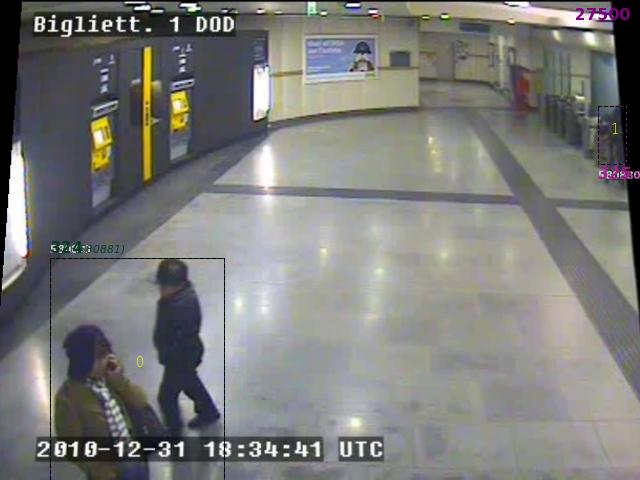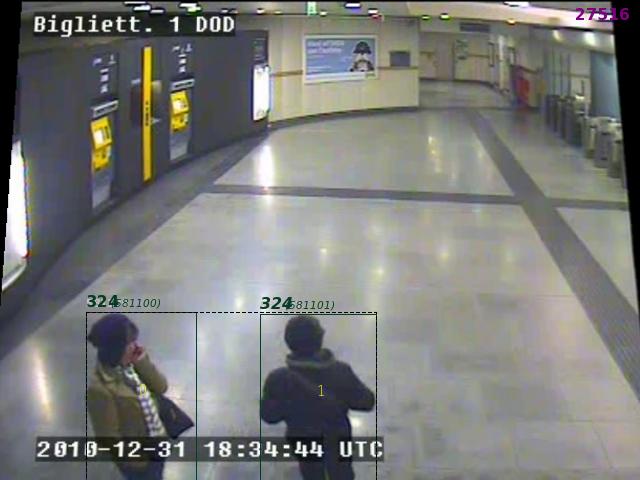Section: New Results
Group Interaction and Group Tracking for Video-surveillance in Underground Railway Stations
Participants : Sofia Zaidenberg, Bernard Boulay, Carolina Garate, Duc-Phu Chau, Etienne Corvée, François Brémond.
Keywords: events detection, behaviour recognition,automatic video understanding, tracking
One goal in the European project VANAHEIM is the tracking of groups of people. Based on frame to frame mobile object tracking, we try to detect which mobiles form a group and to follow the group through its lifetime. We define a group of people as two or more people being close to each other and having similar trajectories (speed and direction). The dynamics of a group can be more or less erratic: people may join or split from the group, one or more can disappear temporarily (occlusion or disappearance from the field of view) but reappear and still be part of the group. The motion detector which detects and labels mobile objects may also fail (misdetections or wrong labels). Analysing trajectories over a temporal window allows handling this instability more robustly. We use the event-description language described in [88] to define events, described using basic group properties such as size, type of trajectory or number and density of people and perform the recognition of events and behaviours such as violence or vandalism (alarming events) or a queue at the vending machine (non-alarming events).
The group tracking approach uses Mean-Shift clustering of trajectories to create groups. Two or more individuals are associated in a group if their trajectories have been clustered together by the Mean-Shift algorithm. The trajectories are given by the long-term tracker described in [60] . Each trajectory is composed of a person's positions on the ground plane (in 3D) over the time window, and of their speed at each frame in the time window. Positions and speed are normalized using the minimum and maximum possible values (0 and for the speed and the field of view of the camera for the position). The Mean-Shift algorithm requires a tolerance parameter which is set to 0.1, meaning that trajectories need to be distant by less than 10% of the maximum to be grouped.
As shown in Figure 23 , people in a group might not always have similar trajectories. For this reason, a group is also created when people are very close. A group is described by its coherence, a value calculated from the average distances of group members, their speed similarity and direction similarity. The update phase of the group uses the coherence value. A member will be kept in a group as long as the group coherence is above a threshold. This way, a member can temporarily move apart (for instance to buy a ticket at the vending machine) without being separated from the group.
This work has been applied to the benchmark CAVIAR dataset for testing, using the provided ground truth for evaluation. This dataset is composed of two parts: acted scenes in the Inria hall (9 sequences of 665 frames in average) and not acted recordings from a shopping mall corridor (7 sequences processed of 1722 frames in average). The following scenarios have been defined using the event-description language of [88] : fighting, split up, joining, shop enter, shop exit, browsing. These scenarios have been recognized in the videos with a high success rate (94%). The results of this evaluation and the above described method have been published in [45] .
The group tracking algorithm is integrated at both Torino and Paris testing sites and runs in real time on live video streams. The global VANAHEIM system has been presented as a demonstration at the ECCV 2012 conference. A demonstration video has been compiled from the results of the group tracking on 60 sequences from the Paris subway showing interesting groups with various activities such as waiting, walking, lost, kids and lively.





